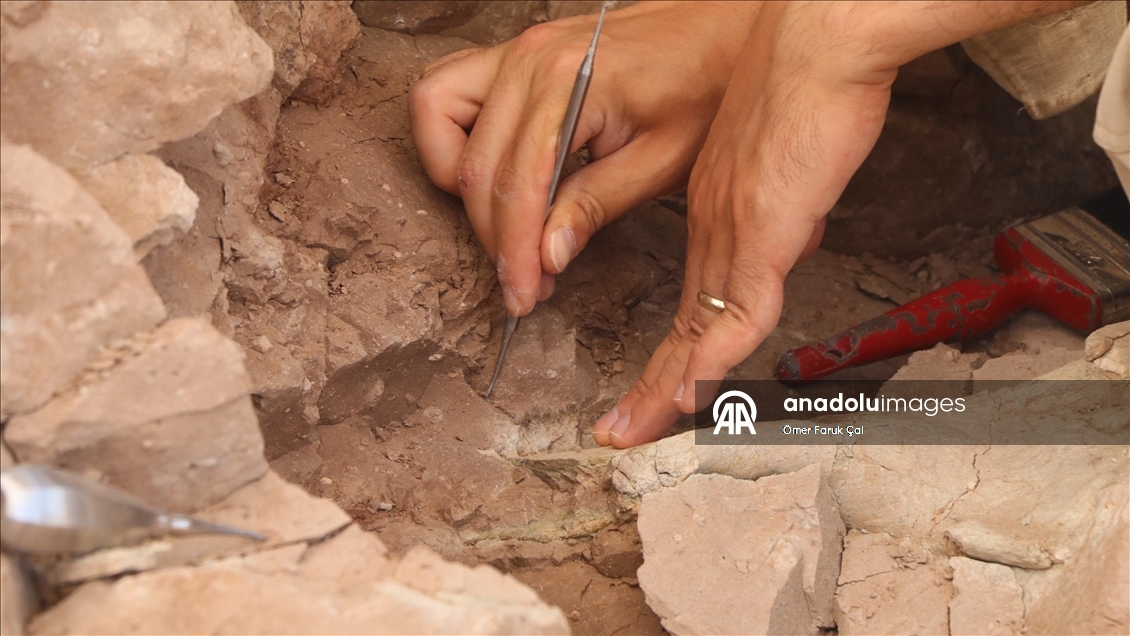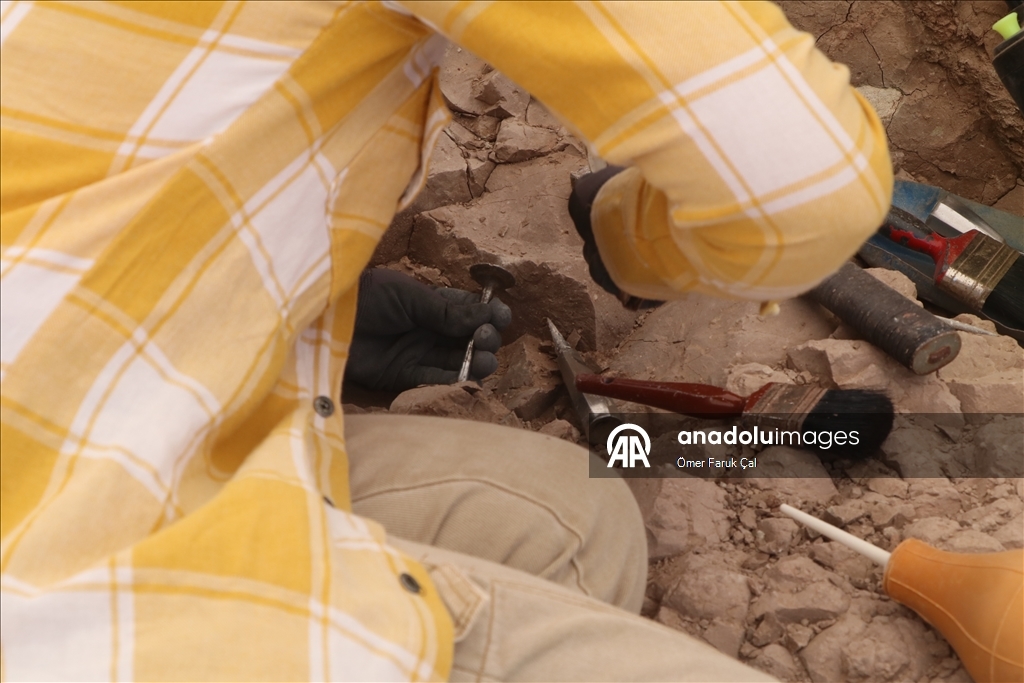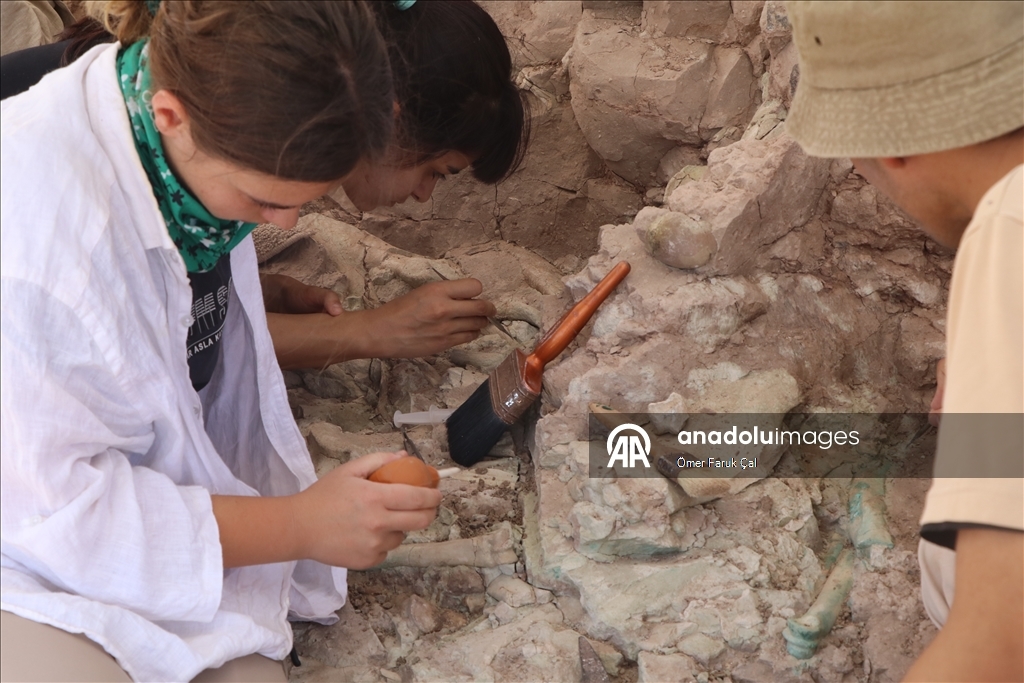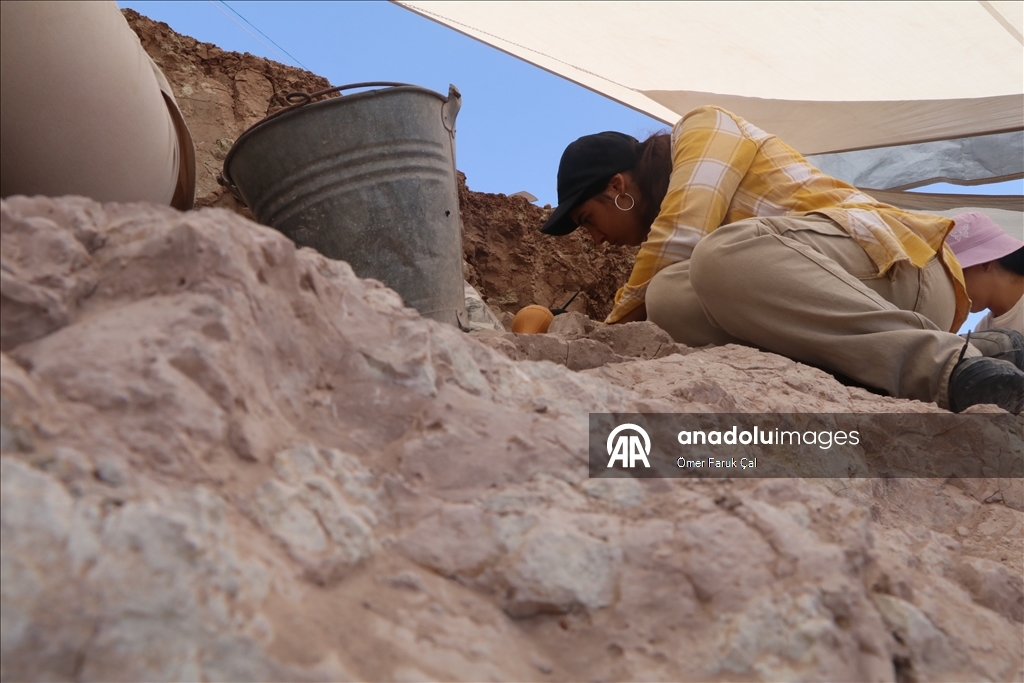They track down 9-million-year-old fossils in scorching heat





This season's excavations at the site next to the Çankırı-Yapraklı highway began in the first week of July with a team of 15 people.
To date, 4,380 fossils (nearly complete) and many smaller fragments belonging to 43 different species, including the ancestors of horses, elephant species, giraffes, saber-toothed cats, otters, porcupines, bears and pigs, have been unearthed in the area.
Despite the scorching heat, the excavation team, which is tracking fossils, is trying to protect itself from the heat with an awning they set up themselves.
Ankara University Faculty of Language, History and Geography, Anthropology Department Head Prof. Dr. Ayla Sevim Erol told an AA correspondent that they began fieldwork on July 7.
Erol emphasized that the work is being carried out with great care, saying, "Our work continues in the field, with temperatures around 40 degrees Celsius last week and again at very high temperatures this week. We are working together with first-year university students, graduate students, doctoral students, and our professors who have completed their doctorates. The fossils are being excavated one by one, patiently, meticulously, without any hesitation, with meticulous attention to detail, using dental tools."

Underlining that they work an average of 8.5 hours a day in the field, Erol said:
"We take a one-hour break at noon. Then we work non-stop until 5:00, without a break. Because extracting fossils is so difficult and demanding that we have to dig wells with needles. Dental tools break from time to time, but we have to dig small pieces. We're on hard ground, and the clay layers have petrified. We're trying to extract the fossils by wetting and softening them. That's why it's such a difficult, laborious, and slow-moving endeavor."

Şevval Yüce, a 4th-year student in the Anthropology Department of the Faculty of Language, History and Geography, stated that she has been participating in excavations in the area for three years.
Yüce explained that they resorted to various methods to protect themselves from the heat and said:
"We're working in the shade because we set up awnings. That's very relaxing. Of course, the wind also helps. It's not always this easy. We've seen temperatures of 41 degrees this season. So, there are some days where it's a little challenging, but generally, we're doing well. We wear our hats, try to stay out of the sun, drink plenty of water, and put on sunscreen. That's how we try to protect ourselves from the sun."
Zeynep Ülger, a graduate of the Anthropology Department who has been participating in the excavations for four years, emphasized that despite the hot weather, they are trying to illuminate Çankırı's past, saying, "Perhaps the biggest challenge of the excavation is the heat. We try to shade ourselves under the awnings. We take the awnings down and put them back up every day. That phase is a bit tiring."
The Anadolu Agency website publishes a summary of the news presented to subscribers through the AA News Feed System (HAS). Please contact us for subscription information.AA





